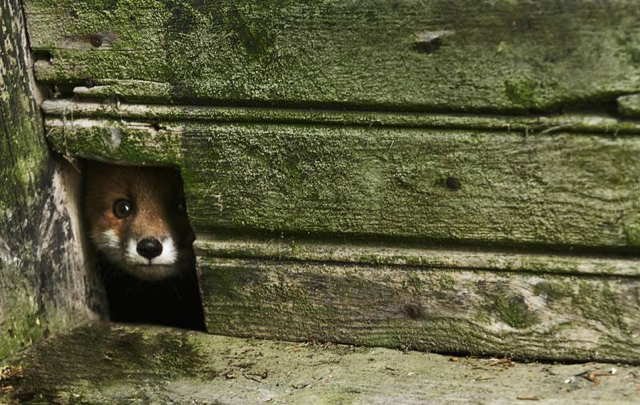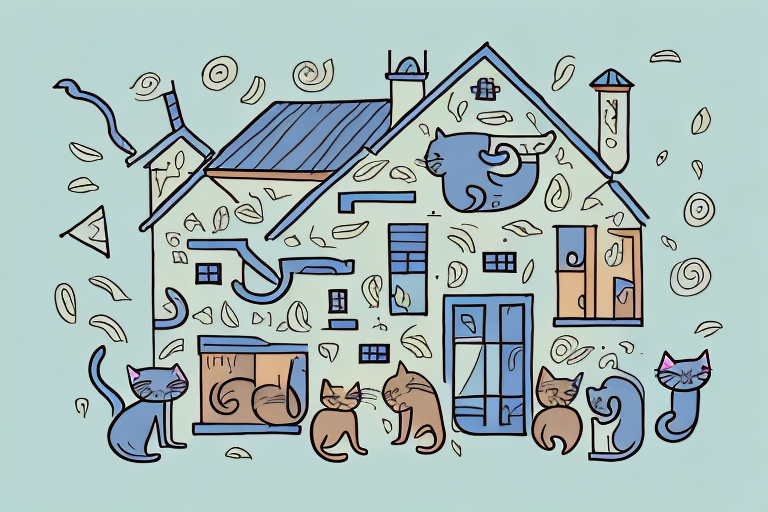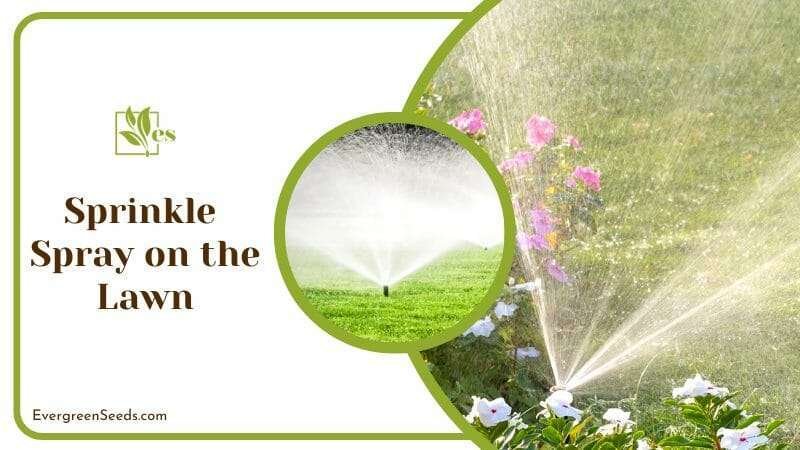Have you ever wondered why animals seem to be drawn to your house? It’s a common occurrence – furry creatures showing up on your doorstep, birds making nests in your trees, or even the occasional raccoon rummaging through your garbage cans. In this article, we will explore the reasons behind this phenomenon, unlocking the secrets of why animals just can’t resist paying you a visit. From easy access to food sources to the comforting presence of shelter, there are a multitude of factors that can explain why your home is an animal hotspot. So, if you’re curious to find out why your house is a magnet for critters, keep reading to uncover the fascinating reasons behind their relentless return.


Signs of Animal Activity
Tracks and footprints
One of the first signs of animal activity around your house is the presence of tracks and footprints. These can give you clues about the type of animal that has been visiting your property. Whether it’s muddy footprints from raccoons or small paw prints from stray cats, taking note of these tracks can help you identify the animal and take appropriate action if needed.
Droppings and urine
Another common sign of animal activity is the discovery of droppings and urine. Animals often leave their waste behind as they explore your yard or seek shelter in your home. By observing the size, shape, and odor of the droppings, you can determine which animals have been frequenting your property. This information is crucial in developing a plan to prevent further intrusions.
Gnaw marks and chewed objects
If you notice chewed objects or gnaw marks on furniture, wires, or other items in and around your house, it’s likely that you have unwanted animal visitors. Rodents, such as mice and rats, are notorious for their ability to gnaw through almost anything. Pay close attention to chewed cables, as they can pose a fire hazard.
Nesting materials
Finding nesting materials around your property is a clear indication that animals have been seeking shelter and are attempting to establish a home nearby. Bird nests, squirrel nests, or even the discovery of rabbits’ burrows can indicate regular visits from these animals. Understanding their nesting habits can help you identify the specific species and employ targeted prevention methods.
Factors Attracting Animals
Food sources
One of the primary factors that attract animals to your house is the availability of food sources. Leftover pet food, unsecured garbage bins, and open compost piles can serve as an irresistible buffet for various creatures. By ensuring that these food sources are properly secured or removed, you can greatly reduce the likelihood of attracting unwanted visitors.
Water sources
Animals, like all living beings, need water to survive. If there are easily accessible water sources on your property, such as uncovered ponds, overflowing birdbaths, or leaky pipes, animals will be drawn to them. Identifying and fixing these water sources can discourage animals from visiting your home.
Shelter and hiding spots
Animals seek shelter and hiding spots to protect themselves from predators or inclement weather. Your house, with its various nooks and crannies, can seem like an ideal place for them to seek shelter. Addressing potential entry points and sealing them off can greatly reduce the likelihood of animals taking up residence on your property.
Warmth and comfort
During colder months, animals are often attracted to warm and cozy places. Ensuring that your home is properly insulated and sealing off any drafts or gaps can help discourage animals from seeking refuge inside your house.
Availability of mates
Another reason why animals keep coming to your house is the availability of potential mates. Breeding seasons can drive animals to explore new territories and search for mates. Understanding the mating patterns of specific animals can help you anticipate their seasonal visitations and take preventive measures accordingly.


Common Animal Visitors
Rodents
Rodents, such as mice and rats, are notorious for their ability to find ways into your home. They infest houses, contaminate food, and can cause structural damage with their persistent gnawing. Keeping your surroundings clean, ensuring all entry points are sealed, and using traps and baits can effectively manage rodent populations.
Birds
Birds are beautiful creatures that can bring joy to our lives with their songs and vibrant colors. However, their presence in large numbers can lead to issues, such as damage to property and the spreading of droppings. Installing bird feeders and birdhouses in appropriate locations can help redirect their attention away from your home.
Insects
Insects, including ants, cockroaches, and spiders, are common visitors in many households. They can be a nuisance and, in some cases, pose health risks. Properly sealing cracks, keeping food stored in airtight containers, and using insecticides can help control their population and prevent infestations.
Raccoons
Raccoons are crafty animals known for their intelligence and dexterity. They can cause significant damage by rummaging through trash cans, tearing apart gardens, and even invading attics. Securing your trash cans with bungee cords, reinforcing weak points in your house, and removing potential food sources can deter these curious creatures.
Squirrels
Squirrels are agile and energetic creatures that can cause havoc in your yard. They are known for digging up gardens, stealing bird feed, and chewing through electrical wires. Using squirrel baffles on bird feeders, sealing entry points, and providing alternative food sources away from your home can help manage their presence.
Stray cats and dogs
Stray cats and dogs can pose a challenge, as their behavior and needs can vary greatly. The best course of action is to contact local animal shelters or rescue organizations to address their presence responsibly. They can assist in finding suitable homes or providing necessary care for these animals.
Preventing Animal Intrusions
Securing garbage and compost bins
One of the simplest ways to prevent animal intrusions is to secure your garbage and compost bins. Investing in animal-proof containers or using bungee cords to secure lids can prevent animals from accessing these potential food sources. Additionally, cleaning up any spills or excess debris around the bins can also help deter unwanted visitors.
Keeping pet food indoors
Leaving pet food outside can attract animals to your property. To prevent this, keep your pet’s food dish indoors or only put it out during feeding times. If feeding outside, make sure to monitor the area and remove any leftover food promptly. This will prevent the smell from lingering and attracting animals.
Sealing potential entry points
Animals can enter your house through small gaps and cracks in the foundation, walls, or windows. Inspect your home and seal any potential entry points to prevent them from accessing your living spaces. Using materials such as caulk, weatherstripping, or expanding foam can effectively block these entryways.
Trimming vegetation near the house
Overgrown vegetation near your house can provide hiding spots and easy access for animals. By regularly trimming bushes, trees, and grass around your property, you eliminate potential hiding spots and reduce the likelihood of animals making their way to your home.
Installing deterrents
There are various deterrents available in the market that can discourage animal intrusions. Motion-activated sprinklers, ultrasonic devices, chemical repellents, visual and auditory scares, and fencing/barriers are all effective in deterring unwanted animal visitors. Research and choose the method that best suits your needs and the specific animals in your area.


Animal Deterrents
Motion-activated sprinklers
Motion-activated sprinklers are a popular choice for deterring animals. The sudden burst of water startles and repels animals without causing them harm. These sprinklers can be strategically placed around your yard or near potential entry points to discourage unwanted visitors.
Ultrasonic devices
Ultrasonic devices emit high-frequency sounds that are unpleasant to animals but inaudible to humans. By placing these devices near common entry points or areas frequented by animals, you can create an uncomfortable environment that will deter them from getting too close to your home.
Chemical repellents
Chemical repellents, such as sprays or granules, contain substances that animals find unappealing or offensive. These repellents can be applied to specific areas or boundaries around your property to create a barrier that animals are reluctant to cross.
Visual and auditory scares
Visual and auditory scares, such as scarecrows, noise-making devices, or reflective materials, can startle animals and make them think twice about approaching your house. These deterrents are most effective when they mimic the natural movements or sounds of predators.
Fencing and barriers
Installing fencing or barriers around your property can be an effective way to prevent animal intrusions. The type of fencing will depend on the animals you are trying to keep out. Ensure that the fence is tall enough and buried deep enough to prevent animals from jumping over or digging underneath.
Humane Removal Methods
Contacting animal control or wildlife removal services
If you find yourself dealing with persistent animal intrusions or encounter potentially dangerous animals, it’s best to contact your local animal control or wildlife removal services. These professionals have the knowledge and experience to handle the situation safely and humanely, ensuring the well-being of both the animals and your household.
Using live traps
Live traps can be a humane option for capturing animals and releasing them elsewhere. However, it’s important to check your local regulations and guidelines before using live traps, as some jurisdictions may require permits or have specific rules for trapping and releasing wildlife. Remember to release captured animals far away from your home to prevent them from returning.
Relocating animals
When using live traps, animals can be safely relocated to a more suitable environment. However, it’s crucial to consult with local wildlife experts or animal control to determine the most appropriate relocation site. Releasing animals into unfamiliar territories may have negative implications for both the animals and the existing ecosystems.


Creating a Less Attractive Environment
Removing food and water sources
To create a less attractive environment for animals, it’s important to remove or secure potential food and water sources. Clean up fallen fruit, avoid leaving pet food outside, and eliminate any standing water on your property. By removing these incentives, you significantly reduce the chances of animals being attracted to your home.
Keeping the yard tidy
Maintaining a tidy yard can help discourage animal intrusions. Regularly rake leaves, trim grass, and remove any debris that may provide hiding spots or attract animals. By keeping your yard clean and well-maintained, you make it less inviting for unwanted visitors.
Plugging potential hiding spots
Inspect your property for potential hiding spots, such as gaps under sheds, decks, or porches. Filling these areas with materials like wire mesh, rocks, or dirt can prevent animals from using them as shelter. Regularly monitor and address any new hiding spots that might emerge.
Eliminating attractants
To create a less attractive environment, it’s important to eliminate any lingering scents or odors that might attract animals. Clean outdoor grills after use, properly dispose of food scraps, and regularly clean pet areas. By minimizing the scent of potential food sources, you reduce the likelihood of animals being drawn to your property.
Addressing Specific Animal Visitors
Rodents: Using traps and baits
When dealing with rodents, the use of traps and baits can be effective. Snap traps, glue traps, or electronic traps can capture mice and rats, while baits can lure them in for removal. It’s essential to follow instructions carefully and ensure that traps and baits are safely placed out of reach of children and pets.
Birds: Installing bird feeders and birdhouses
If birds are causing a disturbance, consider providing designated feeding areas away from your home. Installing bird feeders and birdhouses in locations that are less likely to attract them to your house can redirect their attention. Research the type of birds in your area and provide suitable feeders and houses accordingly.
Insects: Sealing cracks and using insecticides
To address insect infestations, it’s important to seal any cracks or openings that may serve as entry points. Using insecticides, either natural or chemical, can help control existing populations. Ensure that you choose the appropriate products for the specific insects and follow the instructions carefully to protect yourself and the environment.
Raccoons: Securing trash and reinforcing weak points
Raccoons are known for their ability to raid garbage cans. To prevent their intrusion, secure your trash cans with bungee cords or invest in animal-proof containers. Additionally, reinforce weak points in your property, such as loose siding or worn-out screens, to prevent raccoons from gaining access to your home.
Squirrels: Using deterrents and sealing entry points
To deter squirrels, using visual and auditory scares, such as fake predators or noise-making devices, can be effective. Additionally, sealing potential entry points on your property, like gaps in the eaves or loose vents, can prevent them from finding their way into your home.
Stray cats and dogs: Contacting local animal shelters
When dealing with stray cats and dogs, it’s important to act responsibly and compassionately. Contacting local animal shelters or rescue organizations is the best course of action. They can assess the situation and provide assistance in finding suitable homes or providing necessary care for these animals.


Seeking Professional Help
When the problem persists
If you have tried various preventive measures and still find yourself dealing with persistent animal intrusions, it may be time to seek professional help. Animal control or wildlife removal services can assess your situation and provide expert advice and solutions tailored to your specific needs.
When dealing with potentially dangerous animals
Encountering potentially dangerous animals, such as venomous snakes or large predators, should always be approached with caution. In these situations, it is best to contact local authorities or wildlife experts who are trained and equipped to handle such cases safely. Your safety and the well-being of the animals involved should always be prioritized.
Environmental Impact
The role of humans in attracting wildlife
Humans unknowingly play a significant role in attracting wildlife to their homes. Our unsecured food sources, easily accessible water, and comfortable surroundings create an inviting environment for animals. Being aware of the impact we have and taking proactive measures to prevent animal intrusions can help maintain a balance between coexistence and conservation.
Balancing coexistence and conservation
As humans, we can appreciate the beauty and benefits that wildlife bring to our lives while also recognizing the need to protect our homes and ensure our safety. By implementing preventive measures, seeking professional help when needed, and respecting the ecosystems in which animals live, we can strike a balance between coexistence and conservation, creating a harmonious relationship with the wildlife around us.
Your Expert in Animal Control and Extermination. Trust our experience for humane, effective pest management, protecting your property and ensuring peace of mind with Michael S.





